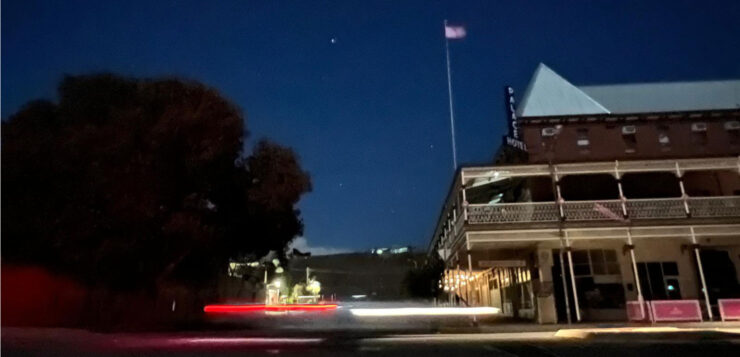Broken Hill doesn’t often make the news, but when it does, it’s often for the wrong reasons. Over to Geoff Russell to explain why the recent power crisis was so shambolic that it made national headlines.
AUTHOR’S UPDATE: The article below was written before the failure of the backup diesel generator in Broken Hill. It turns out that while there are two, one was awaiting repair. Ouch. I wonder how long it had been waiting and why?
It also appears that the Transgrid report I mention which reckoned on 25MW being adequate to supply Broken Hill was wrong. I’ve had discussions over the years with engineers about how much power capacity you need for a given collection of houses and they always reckon it’s lower than my guess; meaning they are right and I am wrong.
I say this because their estimates are used in all our towns and cities and the grid works. I always overestimate the risk of everybody using everything simultaneously and overloading the available capacity. But it seems that there has been an increase in power usage in Broken Hill, or a change in patterns of usage, that have made 25MW too small for the job.
I base that on the reports of various constraints on power usage that have been reported in the media, including many reports of businesses and people using their own generators.
Keep both things in mind as you read on; namely that Plan C was awaiting repair and Plan B turned out to be under-resourced.
A timelapse of one of the numerous storms and blackouts experienced by residents in the Far West of NSW in October.
Storms (possibly including tornados) on Thursday, October 17th knocked out seven transmission towers on the single line carrying power to Broken Hill. On the other side of the border in South Australia they took BHP’s Olympic Dam mine off line.
The storms were part of a wider weather system that dropped an additional 29 transmission structures in South Australia; 23 towers and six big stobie poles. A “stobie” pole is super solid concrete and steel structure. Think of it as two vertical pieces of railway track with a 30-90 cm of concrete between them. They are common in SA, but rare elsewhere.
Happily, a couple of “small” diesel generators can (or maybe cannot – the system has failed several times since Thursday) keep the lights on in Broken Hill for the weeks it will take to replace the towers. Olympic Dam is another story. It has generators also, but they will only handle “care and maintenance” operations, the main mining operations will be quiet for weeks.
So too the three main mines in Broken Hill proper – they’ve all shut down, with workers forced to take annual leave, leave without pay, or long service.
I drove into Broken Hill a few weeks ago from Adelaide. There’s a 50-megawatt (MW) solar farm on the edge of town as you arrive. Residents might be wondering why they are running on diesel and not that solar farm. I’ll get to that soon enough.
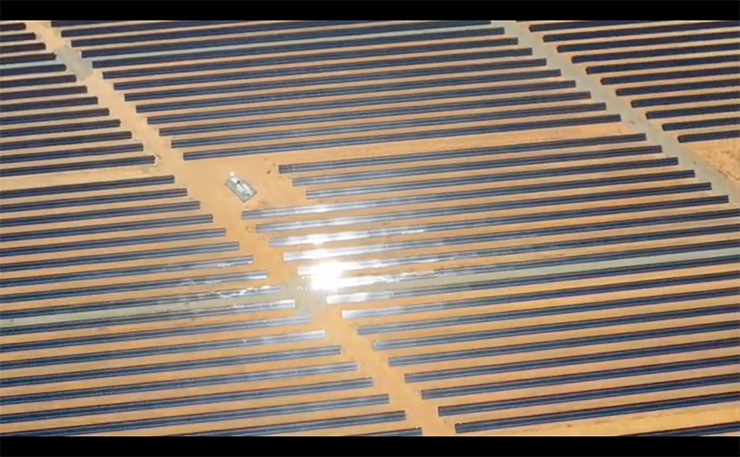
First let’s talk about power and energy. If you know the difference between kW and kWh and between MW and MWh, then you can skip this paragraph and the next. Otherwise, read this paragraph and the next two a few times, until it becomes really clear.
Your electric jug probably uses around 2,000 watts (W) of power. A watt is a unit that measures power, which is the rate at which energy is used. A kilowatt (kW) is 1,000 watts. Energy, measured in kilowatt-hours (kWh), tells you how much power you’ve used over time. For example, if your jug runs at 2,000 watts for half an hour, it uses 1 kWh of energy.
Your electric jug is probably about 2,000 watts; watts is a unit that measures power. A kilowatt (kW) is 1,000 watts of power. Energy, however, is a measure of how long you have been using that power. So, a kilowatt-hour is the amount of energy used when you use 1 kilowatt of power for 1 hour.
If you had a 4,000 watt jug it would boil water twice as fast as a 2,000 watt jug because it can apply twice the power; but it would use exactly the same amount of energy. A 500 watt jug would take 4 times as long to boil the same amount of water as a 2,000 watt jug. Use the same power for twice as long and you use double the energy. If you use 1 million watts for 1 hour, then you’ve used 1 megawatt-hour (1MWh) of energy. So 500 people turning on a 2,000 watt jug for an hour will use 1MWh of energy (because 500 x 2,000 = 1,000,000).
Now let’s restart being clear about the basics. Broken Hill has a population of about 17,000 people. The diesel generators are 25 MW; the MW is the power of the generators. Remember, MW is a million watts. Divide 25 MW among 17,000 people and you find out the amount of power they can use simultaneously from that generator; and the answer is 1,450 watts (easy: 25,000,000/17,000=1,450).
So if every individual (not just each household – there’s about 8,000 of those) in Broken Hill was running a 1,600 watt kettle at exactly same time, the generator wouldn’t cope. What would happen? Jugs are simple things, they’d just use the available power but boil water a little slower. On the other hand, electronics, air conditioners and fancy motors would behave quite differently and not as nicely, and the odds are pretty good that the generator would recognise it was in trouble and shut down to protect sensitive devices. After all, it can’t tell the difference between a jug and a computer.
On a larger grid, say, Adelaide, as more people draw more power, grid operators (aided by a considerable bank of hardware and software) add more generation to handle the increase. They also remove generation as people reduce the power they are using. This is called “load balancing”. Engineers refer to the power demand as the “load”. This is measured every five minutes of every day.
A generator comes with circuitry designed to do load balancing automatically. You just keep plugging stuff in and it copes; but cross its upper limit and it will fail.
Happily, people don’t all want electricity at the same time, so 25MW for Broken Hill should, theoretically, be fine. Backup generation diesels often come in pairs like this because you always need a Plan C when you move to Plan B after losing the grid. Transgrid reckon the average demand at Broken Hill is about 21MW. That doesn’t leave much spare capacity if usage peaks.
Then again, plenty of Broken Hill residents have photovoltaic (PV) panels these days. But….
Too much of a good thing
When “Broken Hill” is connected to the grid, any exported PV output just “disappears” into the grid and becomes part of the management responsibility of the grid operator. All the “Broken Hill” PV output wouldn’t have much impact on the thousands of megawatts of power sloshing around on the grid at any7 given time. It’s just a drop in the ocean.
But take “Broken Hill” off the grid and suddenly what was a tiny PV ripple in a national grid becomes a giant wave in Broken Hill’s local grid. The PV output suddenly becomes a big fish in a small pond. That’s why Broken Hill residents are being asked to NOT reduce their energy usage during the day when PV is producing… because if they do, the Broken Hill grid risks having too much power being fed into it, and not enough using it, and will overload and trip, just like it does when there’s not enough power available.
The long-term options
Broken Hill has a backup power source and a deal (described below) has recently been done to change this. But residents may be interested in why some seemingly obvious alternatives won’t fly. For example, why use filthy, dirty diesels which emit carbon dioxide and assorted toxic particulate matter, as back-up generators when there is a 50MW solar farm on the front doorstep of the town?
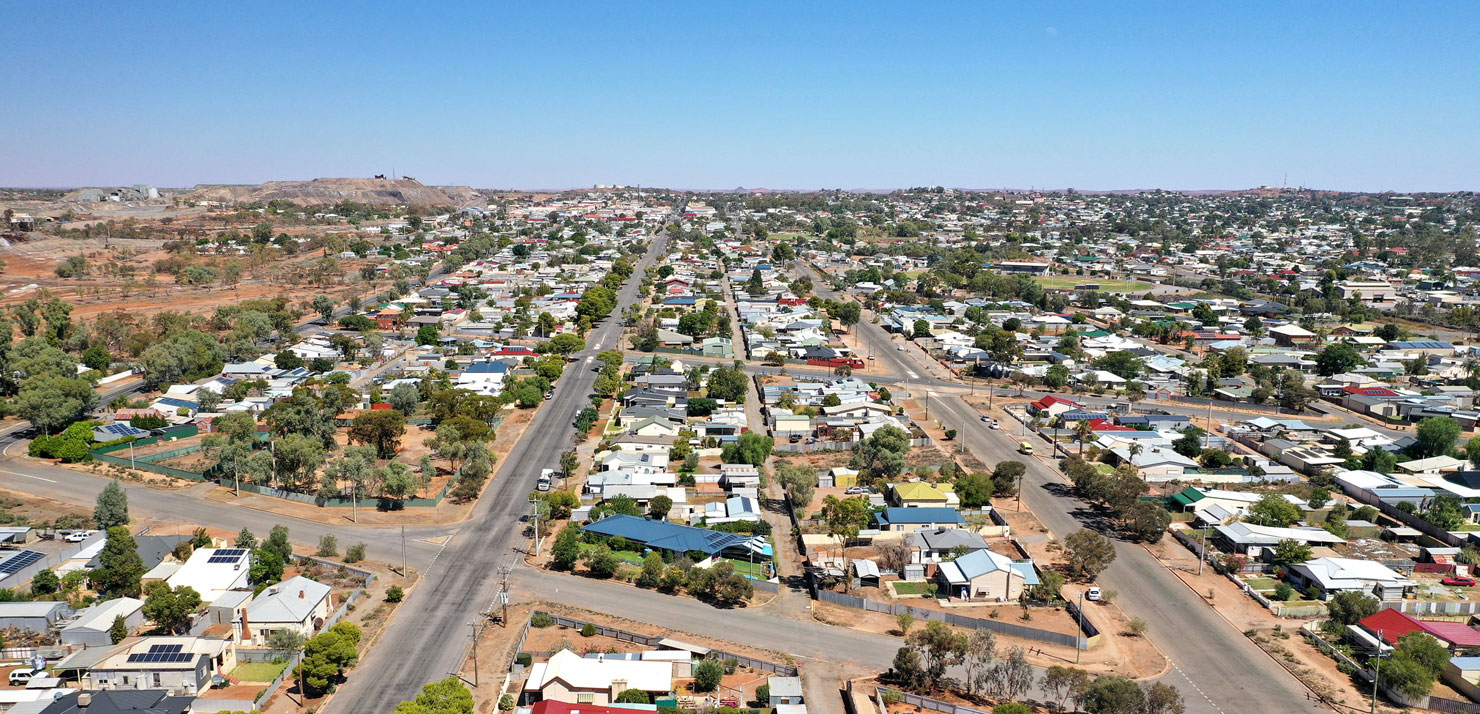
The first thing to note is that things like gas turbines (the main form of back-up power used by coal-fired power stations) are (relatively) cheap. A Siemens SGT-600 turbine, for example, is a 25MW device that will cost you something like $25 million for a pair. And it’ll run for decades. It’s worth noting, there are probably cheaper and dirtier options if you go looking.
They weigh about 200 tonnes a piece. It’s mostly steel, so the amount of carbon dioxide produced in manufacturing them is relatively small. We call these manufacturing emissions “embodied carbon”. The CO₂ produced during steel production is about 1.85 tonnes per tonne of steel. So we’d be looking at about 400 tonnes of CO₂ for each turbine. Remember that number, it’s important later!
If you never use those back-up generators, then they generate no other emissions.
Now lets look at some much dirtier and more costly alternatives.
Option A: solar farm + batteries
There’s the 50MW solar farm on the outskirts of Broken Hill. Transgrid’s report on maintaining reliable electricity in Broken Hill (which I’ll also discuss more fully later) makes it clear the solar farm isn’t configured to supply the town.
But let’s assume that this could be done. (I won’t address any commercial decisions in this article. Tilt Renewables, who owns this solar farm, may not be at all happy doing the modifications involved in supplying the town rather than supplying the grid. Of course, that could change if the town made a suitable offer!) Still, assuming all the technical and commercial problems were solved, you’d obviously need to add storage, because the solar farm doesn’t have batteries attached, and the sun doesn’t shine at night, not even in super sunny Broken Hill.
Firstly, how much carbon is already embodied in the existing panels? That’s a more complex question than you might think, but it could be anywhere between 16,000 and 140,000 tonnes. If the “Broken Hill” panels came with a certified embodied emissions label, it’s probably on the low end of that range, but if they were simply bought on the basis of price, then they probably sit at the higher end. The emissions are all about the origin of the energy used in manufacturing; cheap means coal.
On the other hand, diesel generators vary far less in either their embodied emissions or the emissions from burning diesel. Running a 20MW generator at full load will burn about 5,350 litres of diesel a day and generate about 325 tonnes of CO₂ per day. Run your diesel for 100 days and you’ve generated 32,500 tonnes of CO₂.
Given that 25MW is enough to power the town, 50MW should power the town with enough left over to get it through the night, assuming you had the batteries. So 25MW for say eight hours is 200MWh (obviously… 8 x 25). Elon Musk will sell you some Megapack batteries for just $394,000 per MWh. So all you need is $78 million dollars and the grid would then be your backup, rather than the other way around. The batteries “include up to a 20-year warranty”. That’s interesting wording. It looks like a variable warranty depending on something; price or environmental conditions. Don’t forget to allow extra for delivery and installation at Broken Hill.
You’d need about 2,000 tonnes of these batteries; which are not mostly steel. They have a range of exotic materials with high embodied carbon emissions. For electric vehicle (EV) batteries, the International Energy Agency (IEA) uses a figure of 90 tonnes of CO₂ per MWh as embodied carbon, so we are talking about roughly 18,000 tonnes of CO₂ embedded in the battery manufacture.
You’d need to run your back-up diesel generator for about 55 days to generate 18,000 tonnes of CO₂.
If Broken Hill only needs the diesel generators for a few days a year, then that’s a lower carbon burden than the 2,000 tonnes of battery sitting around as a backup.
There would also be some additional hardware needed to control this combo. What would it cost? I’ve no idea.
In short, you’d be crazy to pick Option A as a backup option. You’d be spending $78 million on the off-chance you need it for a week or three every five years or so?
Option A (as a permanent solution)
But what about Option A as a permanent solution, enabling you to ditch the grid?
Suppose the community pulled together and managed to borrow $78 million at 6% to finance the adventure. What would be the repayments? A loan calculator would give you an answer of $658,000 per month for 15 years. If 7,000 people used 10kwh every day from the batteries, the cost of servicing the loan would add about 31 cents per kWh… that’s about an extra $2,000 added on to the average household electricity bill each year.
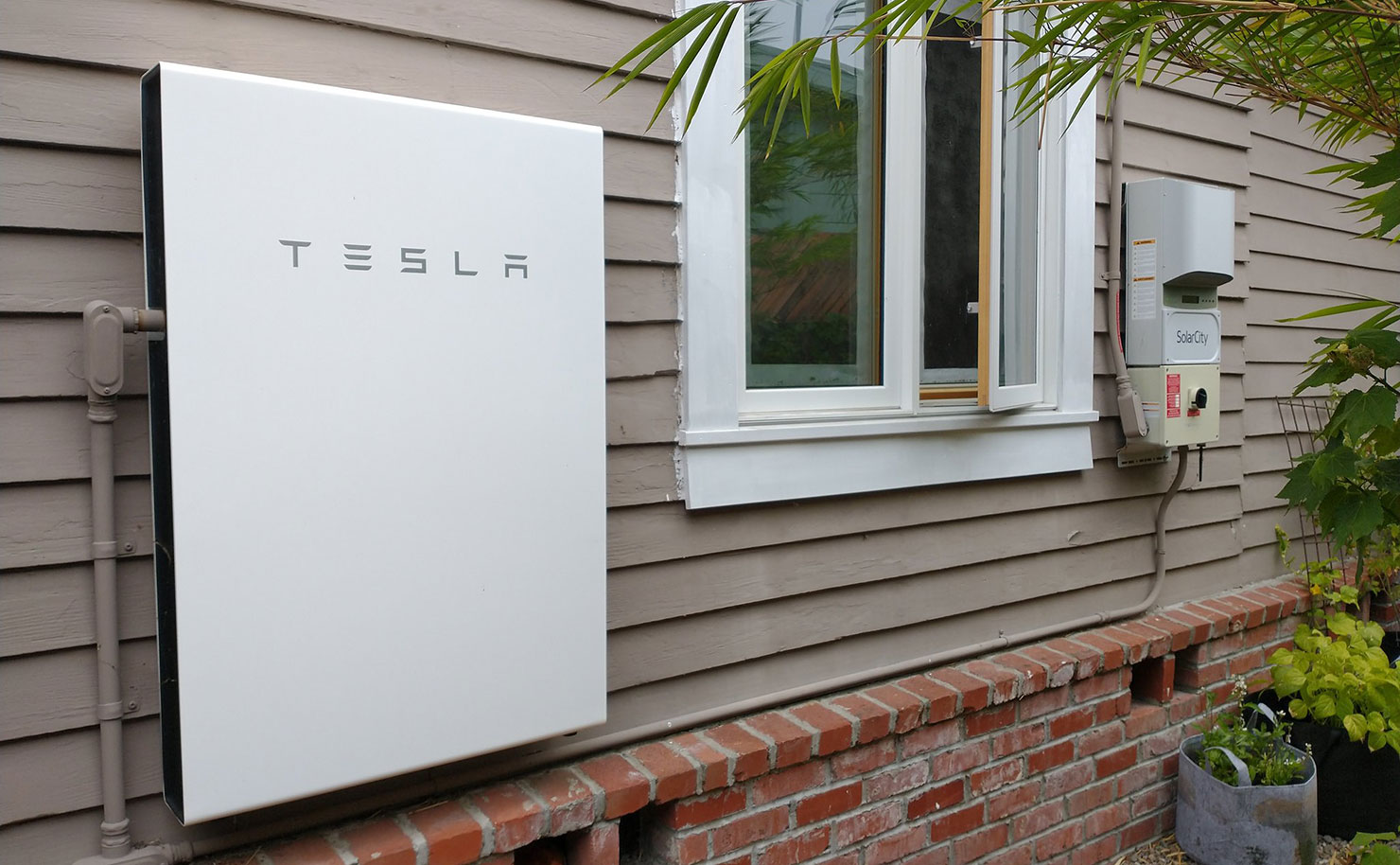
There would be additional costs for insurance and maintenance. Insurance would be to cover things like battery fires.
Again, you’d need rocks in your head to go for such an option. Which is exactly why the Broken Hill Solar farm has no batteries. There may be some level of batteries that make commercial sense for the solar farm, just not as a fully fledged alternative to the grid.
Batteries on the grid don’t make money supplying energy at normal prices, they make it by supplying energy when prices are through the roof.
Option B: Everybody in “Broken Hill” goes off-grid
Alternatively, you could look at everybody in Broken Hill getting PV panels and home batteries. Again, this would enable you to ditch the national grid… or would it?
Let’s assume we have 7,000 households. The cost of 7,000 Tesla Powerwalls would be in the order of $70 million (they’re about $10,000 each). But this only gets you 94MWh of storage, and while most people would get through the night with the 13.5 kWh that a Powerwall supplies, households might fall short after a run of cloudy days.
Option A got us 200MWh for $78 million, and made no sense at all. Option B also makes no sense at all, even if it’s a little cheaper at $70 million.
But you can see that sharing battery capacity is far cheaper than everybody having their own system. Indeed, everybody having their own system is particularly nasty as a solution because a significant percentage of people simply couldn’t afford it without assistance.
Summarising these options
I’ve included these crude calculations just to demonstrate that compared to being serviced by the existing grid, neither option is actually very good. That’s because batteries are incredibly expensive and generate a considerable amount of carbon emissions during manufacture.
The existing grid was paid for long ago and ‘merely’ needs to be serviced, for now. Transmission lines last far longer than batteries, even if they are very costly to build. I haven’t looked at the embodied carbon in the current transmission grid into Broken Hill, but if there was a proposal to rebuild or augment it, then that would be a good time to do an accurate assessment.
Current plans for Broken Hill
At the end of 2023, Transgrid struck a deal with Canadian storage provider Hydrostor to change the power supply arrangements for Broken Hill. The idea is for a large compressed air storage system to provide 200MW of power with 1500MWh of energy. This isn’t a backup system, but a storage system which can trade on the grid. Part of the deal is for Hydrostor to always allow for 50MW/250MWh to be available for backing up Broken Hill.
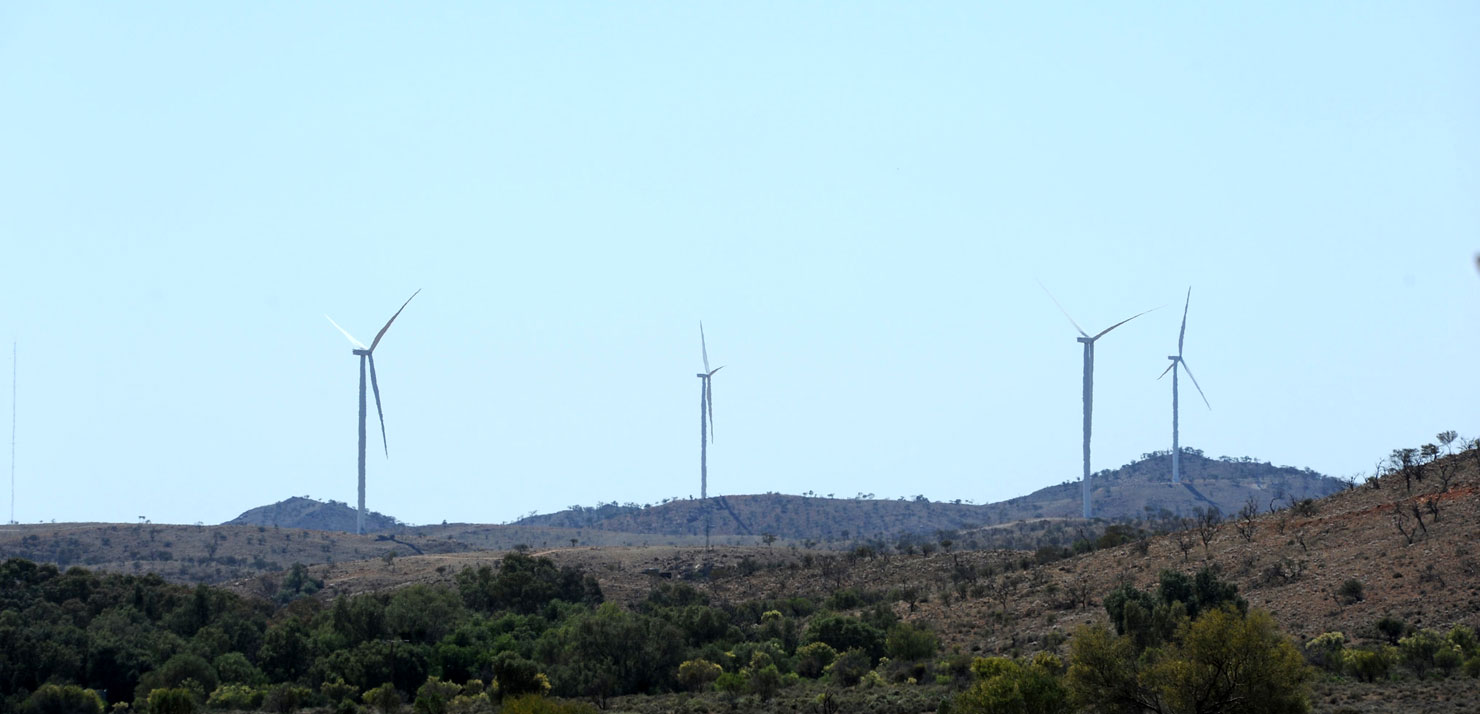
But exactly how is this storage project at Broken Hill going to trade on the grid? The Silverton Wind farm is a 200MW farm to the north west of Broken Hill and it also sells its power to the grid. The problem is that the only transmission between Broken Hill and the grid is the line that is currently out of service. According to the Australian Energy Market Operator (AEMO), the capacity of that line is about 250MW. Which means they could have a combined output of 400MW but only be able to sell 250 MW.
The Broken Hill area is designated as a renewable energy zone (N4) in AEMO’s Integrated System Plan (ISP), but that report notes its limited transmission connectivity and the high cost of expanding that connectivity.
What will that deal cost? And to who? Why was it made? You can read the Transgrid document yourself. Let me know if you find a cost.
The current standard reporting methodology in Australia’s electricity supply system frequently talks about “benefits” relative to some baseline. In any event, the cost may only be known to Hydrostor and the details may well be hidden behind a commercial-in-confidence agreement.
Whatever the case, whether this deal makes sense for the people of Broken Hill depends on whether those diesels remain.
Personally, I wouldn’t trade them for a guaranteed 50MW/250MWh from a wind farm, because that’s just five hours of electricity.
Can you fix a transmission tower collapse in five hours? The line into Broken Hill was wiped out a week ago. It’s still a week or two away from coming back online.
Donate To New Matilda
New Matilda is a small, independent media outlet. We survive through reader contributions, and never losing a lawsuit. If you got something from this article, giving something back helps us to continue speaking truth to power. Every little bit counts.

